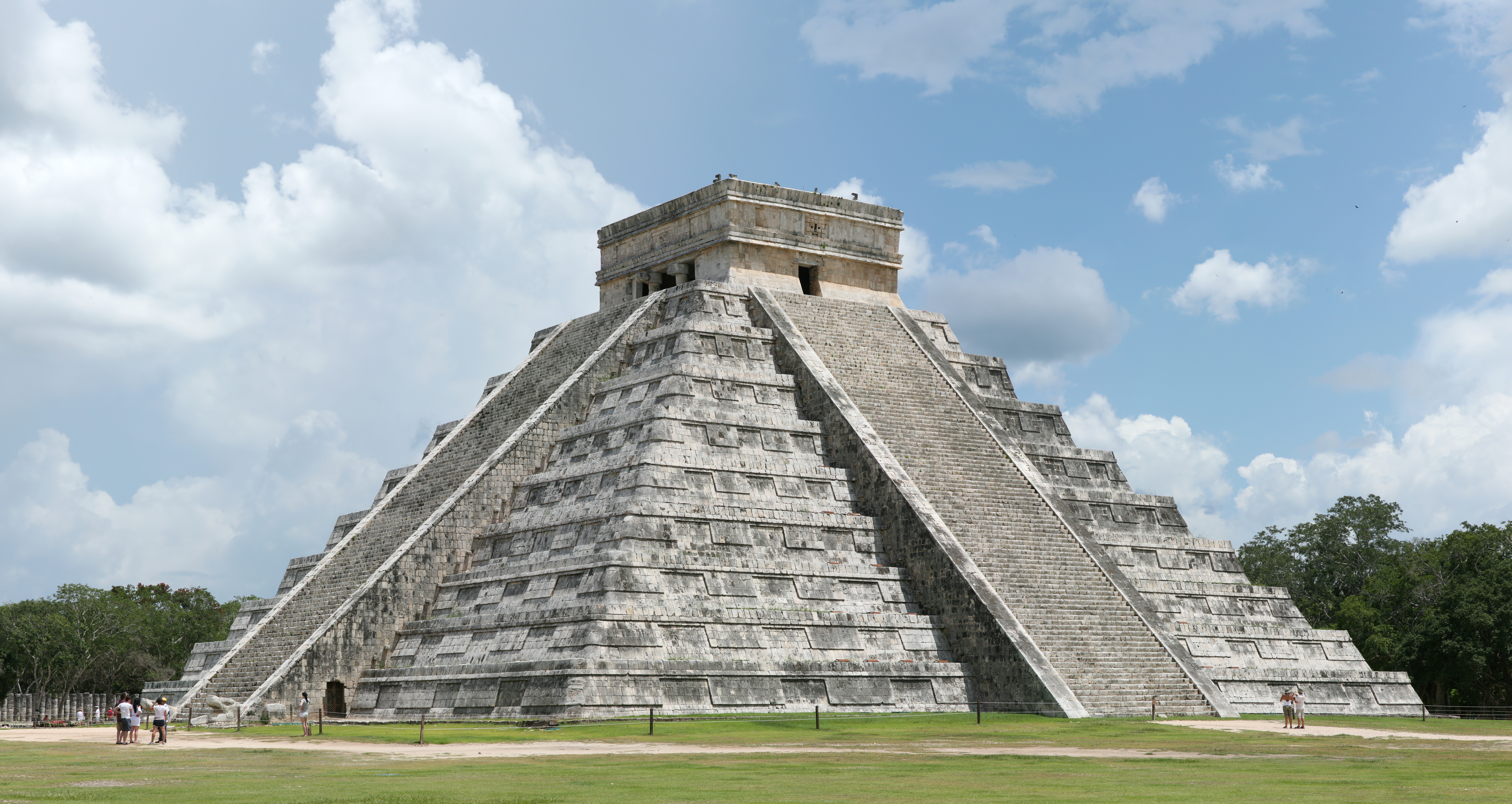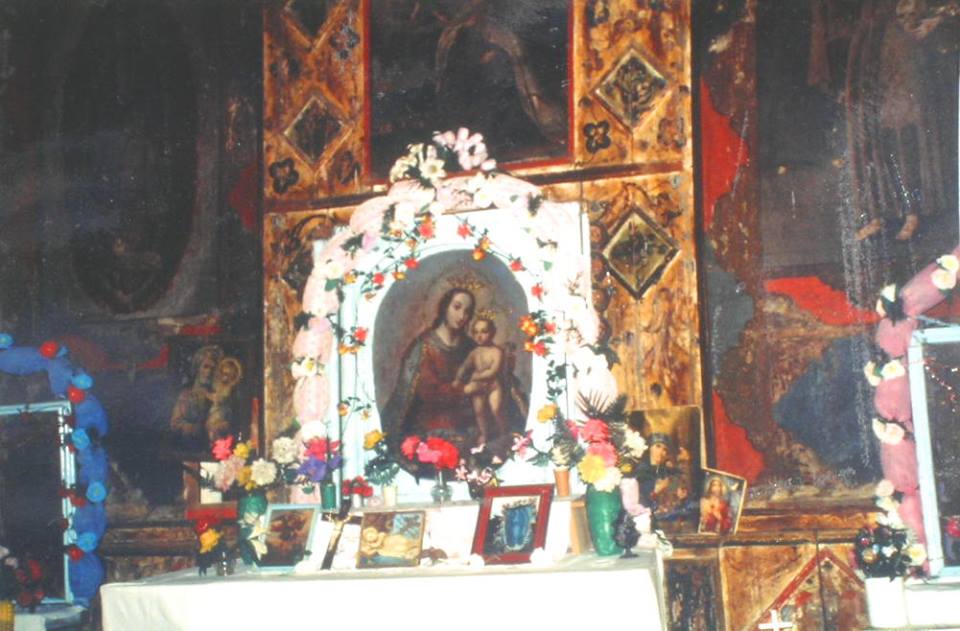|
Mountain Pima
The Pima Bajo (Lower Pima or Mountain Pima) people are indigenous people of Mexico who reside in a mountainous region along the line between the states of Chihuahua and Sonora in northern Mexico. They are related to the Pima and Tohono O’odham of Arizona and northern Sonora, speaking a similar but distinct language.Estrada-Fernández, Zarina. 1998. Pima Bajo de Yepachi, Chihuahua (Archivo de Lenguas Indigenas de Mexico). Colegio de México. "Bajo" or "Lower" as part of the name refers to the geographic location in the southern part of the traditional Pima homeland. Some peoples identifying themselves as Pima and speaking the Pima language formerly lived farther west in the lowlands of Sonora, but they have long been absorbed into mainstream Mexican society. At present, the Pima Bajo are located in rugged, mountainous terrain in the Sierra Madre Occidental. Major communities in the Pima Bajo region include Maycoba and Yécora on the Sonoran side of the line, Yepáchic on th ... [...More Info...] [...Related Items...] OR: [Wikipedia] [Google] [Baidu] |
Mexico
Mexico (Spanish: México), officially the United Mexican States, is a country in the southern portion of North America. It is bordered to the north by the United States; to the south and west by the Pacific Ocean; to the southeast by Guatemala, Belize, and the Caribbean Sea; and to the east by the Gulf of Mexico. Mexico covers ,Mexico ''''. . making it the world's 13th-largest country by are ... [...More Info...] [...Related Items...] OR: [Wikipedia] [Google] [Baidu] |
Yécora, Sonora
Yécora is a small town, and its surrounding municipality of the same name, in the Mexican state of Sonora, located at Latitude = 28.3710, Longitude = -108.9269 with an elevation of 5,173 feet (1,576 m). The town is bordered on the east by the state of Chihuahua, to the north by the municipalities of Sahuaripa and Southeast Rosario, to the west by the municipality Suaqui Grande, and the northwest by the municipality of Onavas. Yécora has an area of 1,279 square miles (3,312 square kilometers), accounting for 1.79 percent of total state. An approximate population for Yécora is 317. History In 1673, the Jesuit missionary Alonso Victoria founded the town of San Idelfonso of Yécora. San Idelfonso of Yécora was later named La Trinidad, a Judicial District in the municipality of Sahuaripa. The municipality held this name until August 28, 1916 when Governor of Sonora Adolfo de la Huerta changed the town's name to Yécora. The name Yécora is derived from an identically named t ... [...More Info...] [...Related Items...] OR: [Wikipedia] [Google] [Baidu] |
Peoples Of The Sierra Madre Occidental
A person ( : people) is a being that has certain capacities or attributes such as reason, morality, consciousness or self-consciousness, and being a part of a culturally established form of social relations such as kinship, ownership of property, or legal responsibility. The defining features of personhood and, consequently, what makes a person count as a person, differ widely among cultures and contexts. In addition to the question of personhood, of what makes a being count as a person to begin with, there are further questions about personal identity and self: both about what makes any particular person that particular person instead of another, and about what makes a person at one time the same person as they were or will be at another time despite any intervening changes. The plural form "people" is often used to refer to an entire nation or ethnic group (as in "a people"), and this was the original meaning of the word; it subsequently acquired its use as a plural form of per ... [...More Info...] [...Related Items...] OR: [Wikipedia] [Google] [Baidu] |
History Of Mexico
The written history of Mexico spans more than three millennia. First populated more than 13,000 years ago, central and southern Mexico (termed Mesoamerica) saw the rise and fall of complex indigenous peoples of Mexico, indigenous civilizations. Mexico would later develop into a unique multicultural society. Mesoamerican civilizations developed glyphic Mesoamerican writing systems, writing systems, recording the political history of conquests and rulers. Mesoamerican history prior to European arrival is called the prehispanic era or the pre-Columbian era. Following Mexican War of Independence, Mexico's independence from Spain in 1821, political turmoil wracked the nation. France, with the help of Mexican conservatives, seized control in the 1860s during the Second Mexican Empire, but was later defeated. Quiet prosperous growth was characteristic in the late 19th century but the Mexican Revolution in 1910 brought a bitter civil war. With calm restored in the 1920s, economic growth ... [...More Info...] [...Related Items...] OR: [Wikipedia] [Google] [Baidu] |
Semana Santa
Holy Week ( la, Hebdomada Sancta or , ; grc, Ἁγία καὶ Μεγάλη Ἑβδομάς, translit=Hagia kai Megale Hebdomas, lit=Holy and Great Week) is the most sacred week in the liturgical year in Christianity. In Eastern Churches, which includes Eastern Orthodox, Eastern Catholic and Eastern Lutheran traditions, Holy Week occurs the week after Lazarus Saturday and starts on the evening of Palm Sunday. In the denominations of the Western Christianity, which includes the Roman Catholicism, Lutheranism, Moravianism, Anglicanism, Methodism and Reformed Christianity, it begins with Palm Sunday and concludes on Easter Sunday. For all Christian traditions it is a moveable observance. In Eastern Rite Churches, Holy Week starts after 40 days of Lent and two transitional days, namely Saturday of Lazarus (Lazarus Saturday) and Palm Sunday. In the Western Christian Churches, Holy Week falls on the last week of Lent or Sixth Lent Week. Holy Week begins with the commem ... [...More Info...] [...Related Items...] OR: [Wikipedia] [Google] [Baidu] |
Holy Week
Holy Week ( la, Hebdomada Sancta or , ; grc, Ἁγία καὶ Μεγάλη Ἑβδομάς, translit=Hagia kai Megale Hebdomas, lit=Holy and Great Week) is the most sacred week in the liturgical year in Christianity. In Eastern Churches, which includes Eastern Orthodox, Eastern Catholic and Eastern Lutheran traditions, Holy Week occurs the week after Lazarus Saturday and starts on the evening of Palm Sunday. In the denominations of the Western Christianity, which includes the Roman Catholicism, Lutheranism, Moravianism, Anglicanism, Methodism and Reformed Christianity, it begins with Palm Sunday and concludes on Easter Sunday. For all Christian traditions it is a moveable observance. In Eastern Rite Churches, Holy Week starts after 40 days of Lent and two transitional days, namely Saturday of Lazarus (Lazarus Saturday) and Palm Sunday. In the Western Christian Churches, Holy Week falls on the last week of Lent or Sixth Lent Week. Holy Week begins with the commemoratio ... [...More Info...] [...Related Items...] OR: [Wikipedia] [Google] [Baidu] |
Jesuit
, image = Ihs-logo.svg , image_size = 175px , caption = ChristogramOfficial seal of the Jesuits , abbreviation = SJ , nickname = Jesuits , formation = , founders = , founding_location = , type = Order of clerics regular of pontifical right (for men) , headquarters = Generalate:Borgo S. Spirito 4, 00195 Roma-Prati, Italy , coords = , region_served = Worldwide , num_members = 14,839 members (includes 10,721 priests) as of 2020 , leader_title = Motto , leader_name = la, Ad Majorem Dei GloriamEnglish: ''For the Greater Glory of God'' , leader_title2 = Superior General , leader_name2 = Fr. Arturo Sosa, SJ , leader_title3 = Patron saints , leader_name3 = , leader_title4 = Ministry , leader_name4 = Missionary, educational, literary works , main_organ = La Civiltà Cattolica ... [...More Info...] [...Related Items...] OR: [Wikipedia] [Google] [Baidu] |
Yepachic
Yepáchic, sometimes spelled Yepáchi, is a community in the western part of the Mexican State of Chihuahua, approximately east of the boundary with the State of Sonora. It is located in the Municipio de Temósachic at an altitude of in the Sierra Madre Occidental. Many of the people of the region are members of the indigenous ethnic group called Mountain Pima or the Pima Bajo. They are related to the Pima and Papago ( Tohono O'odham) of Arizona and northern Sonora, speaking a similar but distinct language.Estrada-Fernández, Zarina. 1998. Pima bajo de Yepachi, Chihuahua (Archivo de Lenguas Indigenas de Mexico). Colegio de México. Most maps give the name as Yepáchic, but the citizens in the town and the road signs in the vicinity spell it Yepachi. The population in 2010 was officially listed as 851, but this number swells to a few thousand on the holidays when people from small hamlets in the surrounding region congregate in Yepáchic. The climate of the region is one of th ... [...More Info...] [...Related Items...] OR: [Wikipedia] [Google] [Baidu] |
Arizona
Arizona ( ; nv, Hoozdo Hahoodzo ; ood, Alĭ ṣonak ) is a state in the Southwestern United States. It is the 6th largest and the 14th most populous of the 50 states. Its capital and largest city is Phoenix. Arizona is part of the Four Corners region with Utah to the north, Colorado to the northeast, and New Mexico to the east; its other neighboring states are Nevada to the northwest, California to the west and the Mexican states of Sonora and Baja California to the south and southwest. Arizona is the 48th state and last of the contiguous states to be admitted to the Union, achieving statehood on February 14, 1912. Historically part of the territory of in New Spain, it became part of independent Mexico in 1821. After being defeated in the Mexican–American War, Mexico ceded much of this territory to the United States in 1848. The southernmost portion of the state was acquired in 1853 through the Gadsden Purchase. Southern Arizona is known for its desert cl ... [...More Info...] [...Related Items...] OR: [Wikipedia] [Google] [Baidu] |
Sonora
Sonora (), officially Estado Libre y Soberano de Sonora ( en, Free and Sovereign State of Sonora), is one of the 31 states which, along with Mexico City, comprise the Administrative divisions of Mexico, Federal Entities of Mexico. The state is divided into Municipalities of Sonora, 72 municipalities; the capital (and largest) city of which being Hermosillo, located in the center of the state. Other large cities include Ciudad Obregón, Nogales, Sonora, Nogales (on the Mexico–United States border, Mexico-United States border), San Luis Río Colorado, and Navojoa. Sonora is bordered by the states of Chihuahua (state), Chihuahua to the east, Baja California to the northwest and Sinaloa to the south. To the north, it shares the Mexico–United States border, U.S.–Mexico border primarily with the state of Arizona with a small length with New Mexico, and on the west has a significant share of the coastline of the Gulf of California. Sonora's natural geography is divided into three ... [...More Info...] [...Related Items...] OR: [Wikipedia] [Google] [Baidu] |
_1938.jpg)





